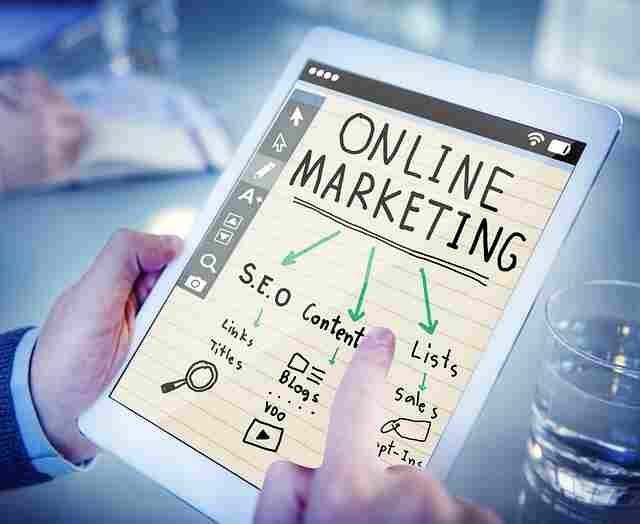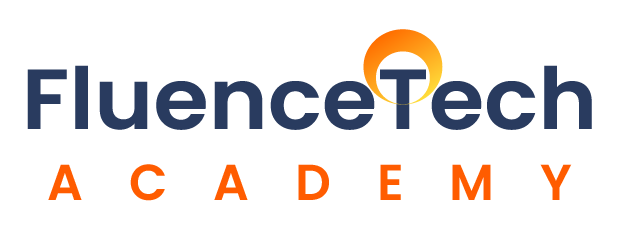Marketing is essential for businesses to reach and engage with their target audience, build brand awareness, and drive conversions and sales. However, with the rise of the internet and social media, traditional marketing methods such as print, television, and radio advertising are being challenged by digital marketing trends and tactics such as social media, SEO, and content marketing.
From billboards to Facebook ads, the battles between traditional marketing and digital marketing are heating up. But are you still stuck in the outbound marketing mindset? Then it’s time to explore the benefits of digital marketing.
So let’s dive into the article below to read the hottest topic of traditional marketing vs digital marketing.
Traditional Marketing

What is Traditional marketing?
Traditional marketing, also known as outbound marketing, is a marketing strategy that focuses on pushing a message out to a large audience, often through interruptive or disruptive tactics such as cold calling, direct mail, TV or radio ads, and billboards.
The goal of outbound marketing is to get a brand or message in front of as many people as possible, with the hope that some of them will be interested in the product or service being offered. outbound marketing typically involves a one-way communication from the company to the potential customer, with the company initiating the interaction and the customer being the recipient of the message.
Unlike inbound marketing, which seeks to attract potential customers by creating valuable content and experiences, outbound marketing is often considered a more traditional and less effective approach, as it can be seen as intrusive and annoying to potential customers who are not interested in the product or service being promoted.
However, this marketing can still be effective in certain contexts, such as for highly targeted campaigns or products or services in high demand with a large potential customer base.
Benefits of traditional marketing
Traditional marketing, also known as outbound marketing, can offer several benefits for businesses, including
Wide reach
outbound marketing methods, such as television and radio ads, billboards, and print advertisements, can reach a large audience quickly and effectively.
Tangibility
outbound marketing materials, such as brochures and flyers, are physical and can be distributed directly to potential customers, making it easier for them to remember and engage with the brand.
Familiarity
outbound marketing methods have been used for decades, so consumers are often familiar with them and may trust them more than newer, digital marketing methods.
Targeted audience
Traditional marketing can be targeted to specific demographics or geographic regions, allowing businesses to reach their ideal customers more easily.
Brand recognition
Consistent use of traditional marketing methods can help build brand recognition and awareness over time.
However, it’s important to note that outbound marketing methods can also be expensive and less effective than newer, digital marketing methods in some cases. Businesses need to evaluate their marketing goals and audience before deciding on a marketing strategy.
Examples of traditional marketing tactics
Here are some examples of outbound marketing tactics:
Television advertisements
Ads that run on TV during commercial breaks.
Radio advertisements
Ads that run on radio stations during commercial breaks.
Print advertisements
Ads that appear in newspapers, magazines, brochures, or flyers.
Billboards and posters
Large advertisements are placed in high-traffic areas, such as along highways or in city centers.
Cold calling
A method of directly contacting potential customers via phone to pitch a product or service.
Direct mail
Send promotional materials, such as postcards or catalogs, directly to potential customers’ mailboxes.
Trade shows and events
Attending or hosting events where businesses can showcase their products or services and interact with potential customers face-to-face.
Public relations
Managing a company’s public image through media relations, press releases, and other communication channels.
Product demonstration
Showcasing a product or service in person to potential customers.
Sponsorship
Supporting events, organizations, or causes as a way to increase brand recognition and awareness.
These outbound marketing tactics can still be effective in certain contexts, especially for businesses targeting specific demographics or geographic regions. However, it’s important to note that newer, digital marketing methods are becoming increasingly popular and effective, and businesses should consider incorporating them into their overall marketing strategy.
Digital Marketing

What is digital marketing?
Digital marketing is a strategy that uses digital technologies, such as the internet, social media, and mobile devices, to promote products or services to potential customers. Unlike outbound marketing, which relies on interruptive tactics like cold calling and advertising, digital marketing seeks to engage with customers in a non-intrusive and interactive way.
Digital marketing offers several benefits over traditional marketing, including greater flexibility, targeting, and measurability. With digital marketing, businesses can target specific audiences, track their campaigns in real time, and adjust their strategy as needed to achieve their marketing goals.
Benefits of digital marketing
Digital marketing provides several benefits for businesses, that includes:
Greater reach
Digital marketing allows businesses to reach a global audience quickly and easily, regardless of their location or time zone.
Targeted audience
Digital marketing methods, such as social media marketing and pay-per-click advertising, allow businesses to target specific demographics, interests, or geographic regions, ensuring that their message reaches the right audience.
Cost-effective
Digital marketing can be more cost-effective than outbound marketing methods, as it often involves less overhead and can be targeted more precisely.
Measurable results
Digital marketing methods allow businesses to track their campaigns in real time and measure the effectiveness of their marketing efforts, allowing them to adjust their strategy as needed to achieve their goals.
Greater engagement
Digital marketing methods, such as social media marketing and content marketing, can encourage greater engagement and interaction with potential customers, building relationships and brand loyalty over time.
Flexibility
Digital marketing allows businesses to adjust their strategy quickly and easily, as they can make changes to their campaigns in real time based on data and insights.
Enhanced brand recognition
Digital marketing methods, such as search engine optimization and content marketing, can help build brand recognition and awareness over time, making it easier for potential customers to find and engage with the brand.
Overall, digital marketing offers a wide range of benefits for businesses of all sizes and industries, allowing them to reach and engage with potential customers in new and innovative ways.
Examples of digital marketing tactics
Here are some examples of digital marketing tactics:
Search engine optimization (SEO)
Optimizing the content of a website and structure to improve its ranking in search engine result pages, and make it more visible to potential customers.
Pay-per-click (PPC) advertising
Advertising allows businesses to place ads on search engine results pages or other websites and pay only when someone clicks on the ad.
Social media marketing
Using social media platforms like Facebook, Twitter, and Instagram to promote a product or service and engage with potential customers.
Email marketing
Email marketing refers to sending promotional emails or newsletters to a list of subscribers.
Content marketing
Creating valuable and informative content, such as blog posts, videos, and infographics, to attract and engage potential customers.
Influencer marketing
You can also use the tactic of partnering with social media influencers to promote a product or service to their followers.
Affiliate marketing
Partnering with other businesses or individuals to promote a product or service and paying them a commission for each sale or referral.
Mobile Marketing
Using mobile devices to promote products or services through mobile applications, SMS messaging, or mobile-responsive websites.
Video Marketing
Creating videos to promote a product or service or provide valuable information to potential customers.
Podcasting
Creating audio content to engage with potential customers and promote a product or service.
These digital marketing tactics offer businesses a range of options to reach and engage with potential customers, build brand recognition and awareness, and drive conversions and sales.
Differences Between Traditional Marketing and Digital Marketing

There are several key differences between traditional marketing and digital marketing:
Reach
outbound marketing methods, such as print and television ads, may have a limited reach compared to digital marketing methods, which can reach a global audience through the internet and social media.
Cost
outbound marketing methods can be more expensive than digital marketing methods, as they may involve production costs for print and television ads, while digital marketing methods can be executed with little or no cost.
Targeting
Digital marketing methods allow for more precise targeting of specific demographics, interests, or geographic regions, while traditional marketing methods may have a broader reach but may not be as targeted.
Measurability
Digital marketing methods allow for real-time tracking and measurement of campaigns, while it can be challenging to measure the effectiveness of outbound marketing methods.
Engagement
Digital marketing methods, such as social media and content marketing, offer opportunities for greater engagement and interaction with potential customers, while outbound marketing methods may be more one-sided.
Flexibility
Digital marketing allows for greater flexibility and agility, as campaigns can be adjusted in real time based on data and insights, while outbound marketing campaigns can be more difficult to change once they are launched.
Personalization
Digital marketing methods allow for greater personalization of content and messaging based on user behavior and preferences, while outbound marketing methods are typically more generic.
Overall, while traditional marketing methods may still have a role to play in certain industries or markets, digital marketing offers several advantages in terms of reach, targeting, cost, and measurability, making it a popular choice for businesses looking to reach and engage with potential customers in today’s digital age.
Which One Should You Choose?
The choice between traditional marketing and digital marketing will depend on various factors, including the target audience, budget, industry, and marketing objectives.
If a business wants to reach a broad audience and has a large budget, outbound marketing methods such as television or print ads may be effective. On the other hand, if the target audience is younger and more tech-savvy, digital marketing methods such as social media and content marketing may be more effective.
Digital marketing also offers more precise targeting options and allows for real-time tracking and adjustment, making it a more flexible and cost-effective option for many businesses. However, outbound marketing methods can still be effective for building brand awareness and reaching audiences that may not be as digitally connected.
Ultimately, a business should consider its marketing goals, target audience, and budget when deciding whether to choose outbound marketing, digital marketing, or a combination of both. By understanding the strengths and weaknesses of each approach, a business can create a marketing strategy that effectively reaches and engages with its target audience and achieves its marketing objectives.
Conclusion
Traditional marketing and digital marketing are two distinct approaches to reaching and engaging with customers. outbound marketing methods such as print, television, and radio advertising have been around for decades and are still relevant in certain industries and markets. However, digital marketing has become increasingly popular due to the rise of the internet and social media, offering businesses a range of cost-effective and targeted options for reaching and engaging with potential customers.
Both outbound marketing and digital marketing have their strengths and weaknesses, and the choice between them will depend on various factors, including the target audience, budget, industry, and marketing objectives. Ultimately, businesses need to consider their unique needs and goals when deciding which approach to take or whether to use a combination of both.
By understanding the differences between outbound marketing and digital marketing and the benefits each approach offers, businesses can create a comprehensive marketing strategy that effectively reaches and engages with their target audience, builds brand awareness and recognition, and drives conversions and sales.

